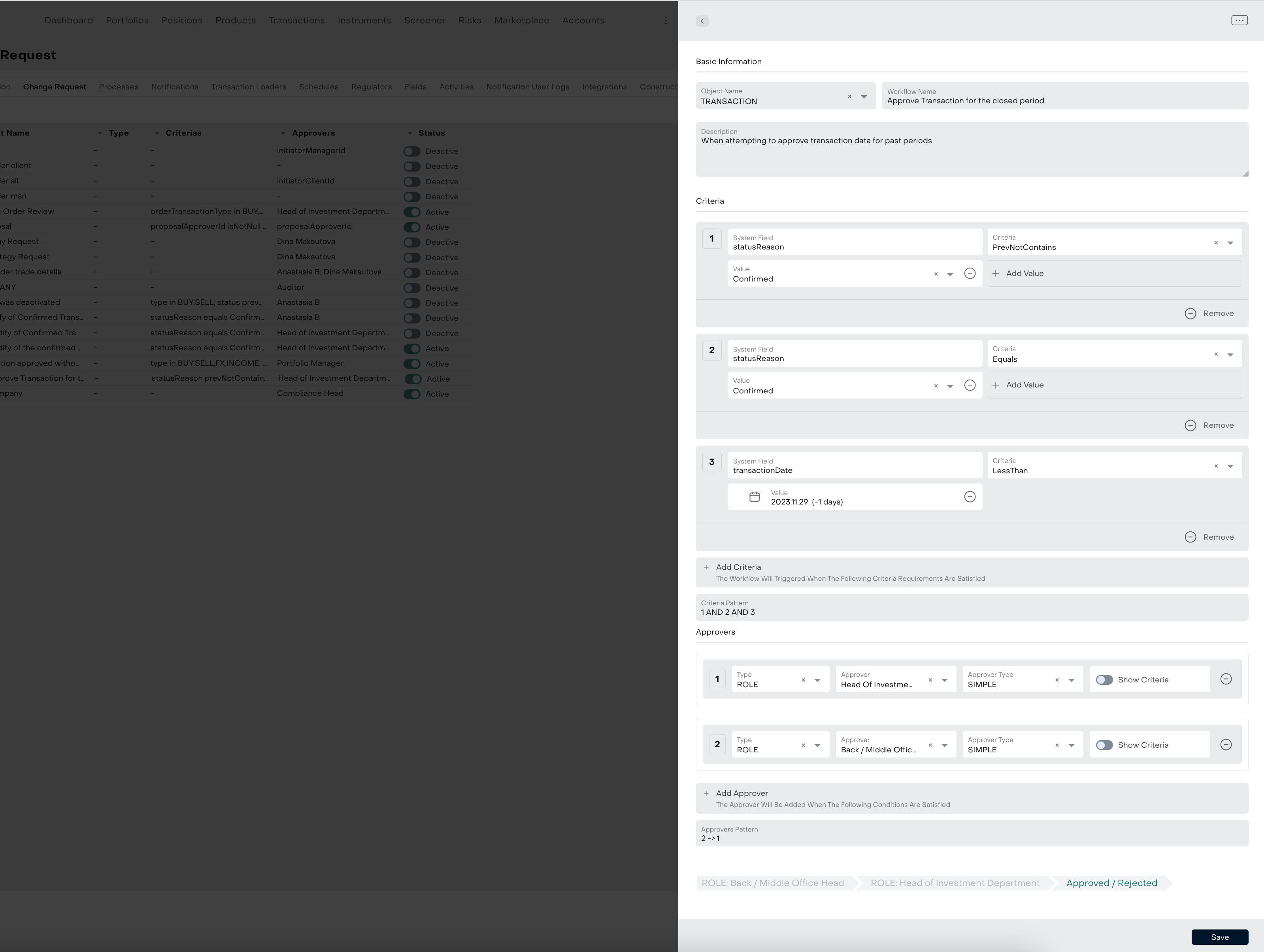How to lock data for the closed periods?
Introduction
In the management of investment assets through the investment platforms, a key aspect is the accuracy and reliability of financial data. One way to ensure these qualities is through the "end-of-day" process. This process prevents unauthorized or erroneous changes in transaction data and prices of financial instruments for past periods. The end-of-day closing helps meet regulatory requirements, improves risk management, and contributes to accurate financial reporting. In our system, two main methods are used to close the day.
End-of-Day Closure Methods
"Change request" Function for Transactions
Working Principle:
(trade date < yesterday), the system initiates the "Change request" process. This prevents the automatic modification of data, requiring instead the creation of a change request.
Goals and Advantages: Ensuring control and accuracy of transaction data, preventing unauthorized changes, improving transparency of financial operations.
Finalizing Prices at the End of the Day
Working Principle: At the end of the trading day, the system fixes the final price of financial instruments, making the data on prices for past days immutable. Changing the final price requires contacting technical support.
Goals and Advantages: Protecting historical price data, ensuring stability and accuracy in reporting, reducing the risk of data entry errors.
These methods are an integral part of the Reluna Platform, contributing to high standards in managing financial operations.


